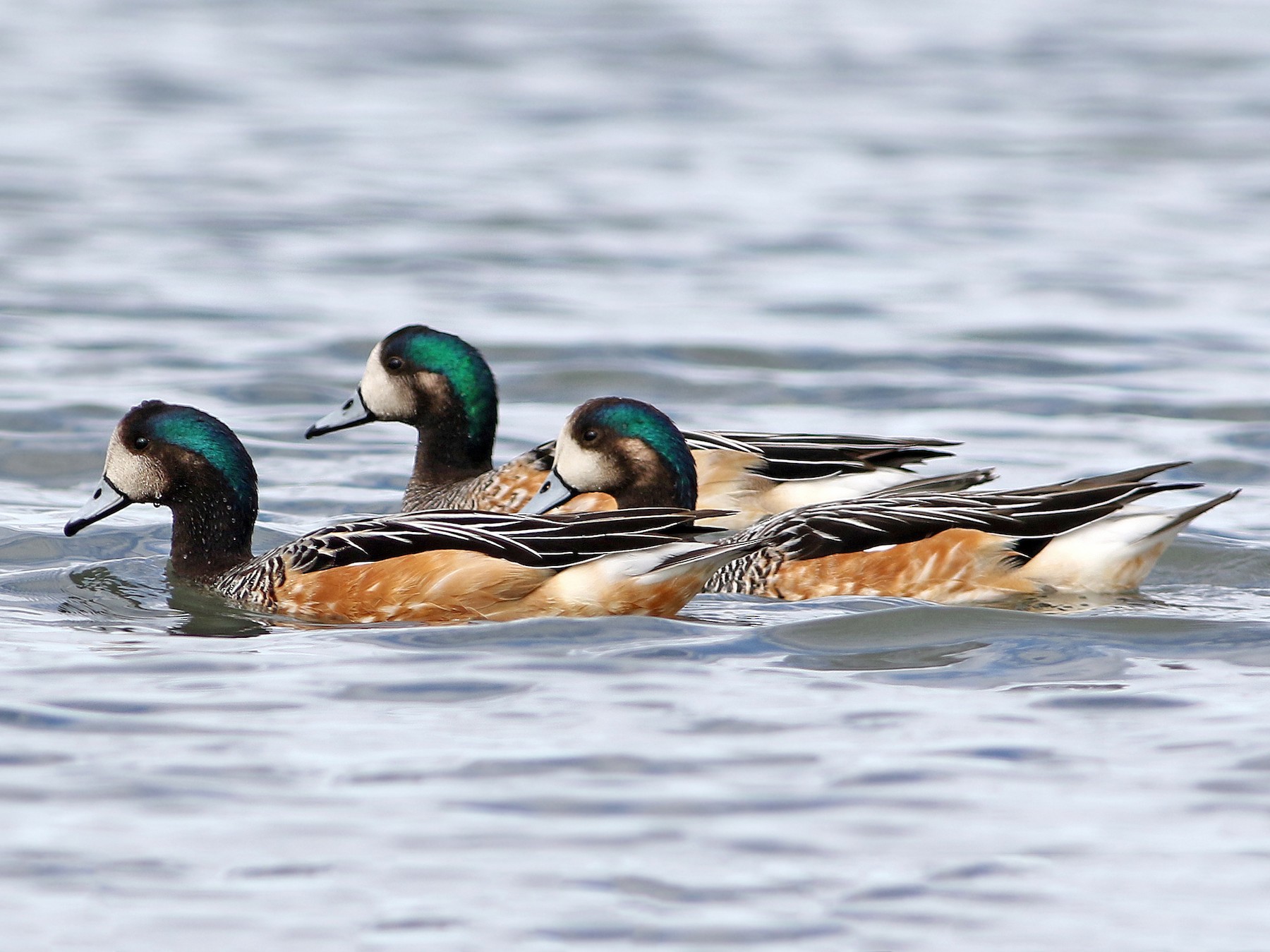The Chiloé wigeon, or Chiloe wigeon scientific name Mareca sibilatrix, often known as the southern wigeon, is considered one of three extant species of wigeon duck within the genus Mareca of the dabbling duck subfamily.
Chiloe wigeon profile
This bird is indigenous to the southern part of South America, together with the Chiloé Archipelago. In its native range, it’s referred to as the pato overo (“piebald duck”) or pato actual (“royal duck”), though the latter name additionally refers back to the Muscovy within the wild. Its particular epithet, sibilatrix, means ‘whistler’, referring to the bird’s call.
Chiloe wigeon duck Description
The Chiloé wigeon has a body size of 46 to 56 cm (18 to 22 in) and a wingspan of 75 to 86 cm (30 to 34 in). The wing size is about 25 cm (9.8 in) and the burden is roughly 800 g (28 oz).
This Chiloe wigeon has an iridescent green-blue cap on its head and a bluish-gray bill with a black tip. The cheeks and brow are white, the eyes are darkish brown, and there’s a white auricular patch.
The neck and occipital a part of the head is black. The breast is barred black and white and the plumage of the wings is grey and white. The flanks of males are rust-colored, and light brown on females. The legs and feet are grey.
Chiloe wigeon duck Distribution and habitat
This duck is indigenous to the southern part of South America, the place it’s discovered on freshwater lakes, marshes, shallow lagoons, and slow-flowing rivers. Vagrants have been noticed in South Georgia, South Orkney, and the South Shetland Islands.
It breeds primarily in Argentina, Uruguay, and Chile. The northern border of the breeding range is in Argentina at 36° S and Chile at 40° S. It additionally breeds sparingly within the Falkland Islands. It migrates to southeastern Brazil for the winter.
It was first launched in Europe in 1870; it quickly bred in zoos.
Because the Chiloé wigeon is extensively distributed and has a big, stable wild population, it’s categorized because of the least concern by the IUCN.
Diet
The Chiloé wigeon duck shows quite a lot of behaviors relying on habitat. It is an omnivore, feeding predominantly on aquatic vegetation and grass, and sometimes coastal algae.
Chiloe wigeon duck Breeding
Sexual dimorphism is comparatively delicate on this species of wigeon. Males are normally considerably bigger and heavier, and with considerably brighter plumage and more strongly pronounced iridescence of the cap.
Apart from these options, it may be troublesome to tell apart the 2 sexes. Juveniles resemble adult birds, however, the rust coloring on the flanks is diminished or absent.
This monogamous Chiloe wigeon species breeds within the austral spring, between September and December. Pairs inhabit very small breeding territories, building their nests in grasses and under bushes.
The feminine Chiloe wigeon lays eight to 10 white or cream-colored eggs. After a gestation interval of roughly 24–25 days, the ducklings are born. The father helps increase the ducklings; nonetheless, he leaves the family after the offspring molt.
More Interesting Articles
- Poicephalus Parrot Profile, Care, Diet Facts and Species
- Wandering Albatross – Habitat | Size | Diet | Facts | Wingspan
- African Cape parrot Personality and Price for Sale
- Great Albatross Facts with Large Wingspan
- Meyer’s Parrot for Adoption and for Sale Near Me
- Waved albatross Profile | Traits | Breeding | Habitat | Facts
- White-faced Black Spanish Chicken Breed | Bantam | Hen | For Sale
- Harz Roller Canary – Singing Price For Sale
- Andalusian Chicken – Profile | Traits | Eggs | Breeds | Facts
- Minorca Chicken Breed | Recognized Variety | Buff | Black | For Sale
- Ancona Chicken Size For Sale | Breed | Eggs | Characteristics
- Catalana Chicken Breed – What to Know for Sale
- Hamburg Chicken Breed – Golden | Blue | Eggs | For Sale
- Rosy Faced lovebird – Agapornis roseicollis Lifespan
- Yellow collared Lovebird (Agapornis personatus) Facts
- Barred, Lineolated or Catherine Parakeet (Bolborhynchus lineola)
- Pacific Parrotlet (Forpus coelestis) – Lesson’s or Celestial Parrotlet
- Turquoise parrot – Neophema pulchella Parrotlet
- Java Sparrow – Java Finch Facts | Pet | Lifespan
- Eastern Rosella Parrot – Platycercus eximius Pet Bird
- Plum Headed Parakeet – Psittacula cyanocephala Facts
- Lilian’s Lovebird (Agapornis lilianae) – Facts | Price | Food | Care
- Alexandrine Parakeet – Alexandrine Parrot Size | Facts | Diet
- Sun Conure or Sun Parakeets – Life Span | Food | Price




